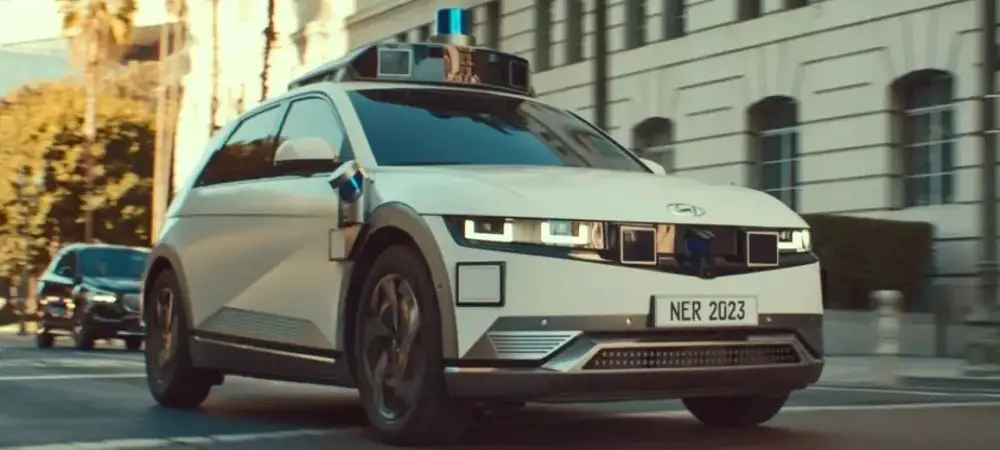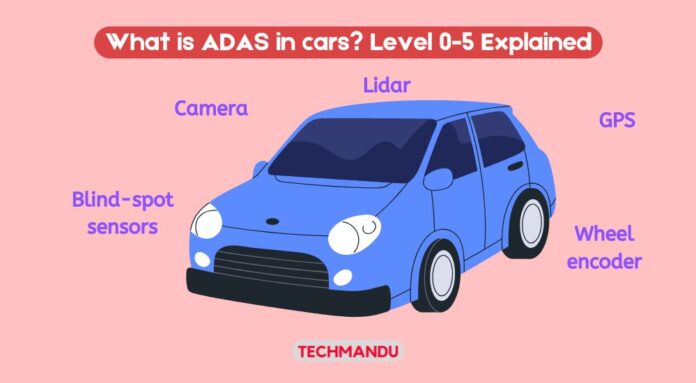Advanced Driver Assistance Systems shortly known as ADAS is a vehicle automation system designed to prevent collision and enhance driving experience. Although almost exclusive to premium cars out there, the feature is becoming more common on more vehicles these days. ADAS comes in six different forms or levels starting from 0 to 5 and the capabilities grow with each higher level. Here, we talk about each of these ADAS Levels in cars in detail.
What is ADAS in cars?
ADAS is a safety feature installed in cars that uses sensors, cameras, hardware/software, and other technologies to assist drivers in the vehicle’s operation. It’s useful for parking keeping within the lane, to detecting a crash. It can come pre-equipped in all sorts of cars and vehicles, tail-pipe or electric.
ADAS in cars is determined by levels which means each level means there are more ADAS features on it. ADAS and automation are used interchangeably.
How ADAS works?
ADAS uses sensors, cameras, and other gears to detect errors, shortcomings, or possible crashes. It also observes the environment and lets the insiders know about possible situations. The processors used in the car process feed from the sensors and alert the driver for prompt action.
Level 0
Level 0 ADAS means the car is manually controlled and there are extremely limited automation features if none. Drivers are directly and presumably responsible for the operation of the car. They take control of the vehicle from the time they switch the car on and off.
Then what does the Level 0 ADAS have to offer? There are some useful features such as blind spot warning, reversing sensors, reversing cameras, etc. Other features that are rather common and advanced too (but not advanced compared to higher level ADAS (sic) such as anti-braking system (ABS) and ESC are also put in the same category. It’s the most commonly found ADAS system in cars in Nepal.
Also: Best electric cars in Nepal
Level 1
Well, the first ADAS level got off to a start with ABS, ESC, reverse cameras, etc. The Level 2 ADAS kicks off the automation to a small extent. The car uses a radar sensor to execute an adaptive cruise control feature which enables it to measure the distance of it from another vehicle in front of it. By studying the data, the car can apply brakes or acceleration. Lane-keeping which uses a camera and sensor to steer back the car within the lane also comes under Level 1 ADAS. In sum, this level of ADAS shares some of the automation with the driver but not to a greater extent. That happens next.
Level 2
Level 2 ADAS boasts the ability of acceleration and deceleration as well as auto parking. But it won’t mean that the driver can take their foot off the pedal and relax without keeping an eye. The attention has to be there but the driver can let the system take off some duty off their shoulders. If the driver wants, he or she can take control back anytime. Cars with Level 2 ADAS are quite common too in Nepal. E.g., BYD Atto 3, Hyundai Tucson, Hyundai Creta EV, MG Astor, etc.
There is also a Level 2+ ADAS system which is slightly advanced over the standard Level 2 ADAS. The Level 2+ ADAS cars handle slightly more enhanced tasks compared to Level 2 ADAS. This includes automatic lane changes, adaptive cruise control with better traffic congestion assist, traffic sign recognition, etc.

Level 3
This gets much more interesting at this stage which is also called conditional driving automation. The car is equipped with Artificial Intelligence and can use various driver assistance features to handle more complex driving conditions. The car can take control of steering, braking, acceleration, and deceleration. The Level 3 ADAS is not yet as mainstream, however, Mercedes’ Drive Pilot is one certified ADAS 3-equipped car.
Level 4
It’s also known as high driving automation and the difference between Level 3 and Level 4 ADAS is that at Level 4, the car can make its own decision in operation while the driver still gets to decide when to take back the autonomy. However, the ability of the car’s self-ride is geofenced meaning that it’s restricted to certain areas for security and safety reasons obviously. In terms of application, Level 4 ADAS is noticeably much more practiced in ride-hailing services but is still too limited presently.
Check out: Tata Punch EV vs Nammi EV: Big Battle of the Two Popular Cars in Nepal
Level 5
The truest form of driving automation takes place at ADAS Level 5 where a car can run without any human intervention. It doesn’t require a driver to call shots. There’s no pedal or wheel for a human to control and there’s no geo-restriction on going by itself. So, the only data that human needs to feed into the car with this system is the destination. This system is not commercially available as yet and remains in the research and development phase. But just like ADAS 4, it’s supposed to come under the taxi service domain in the beginning. And practically speaking, it looks too futuristic to become mainstream at the moment.
ADAS features list
ADAS features are listed below in alphabetical order:
- Adaptive Cruise Control
- Anti-Lock Braking System
- Automatic Parking Systems
- Blind Spot Monitors
- Collision Avoidance Systems
- Cross Traffic Alerts
- Crosswind Stabilization
- Cruise Control
- Driver Drowsiness Detection
- Driver Monitoring System
- Electric Vehicle Warning Sounds
- Electronic Stability Control
- Emergency Driver Assistant
- Forward Collision Warning
- Hill Descent Control
- Hill-Start Assist
- Intelligent Speed Adaptation
- Intersection Assistants
- Lane Centering
- Lane Change Assist
- Lane Departure Warning System
- Parking Sensors
- Pedestrian Protection System
- Rain Sensors
- Traction Control System
- Tire Pressure Monitoring System
- Vibrating Seat Warnings
- Wrong-way driving, etc.
Advantages of ADAS
- Saves energy: ADAS assists drivers with smooth and steady driving which results in energy-efficient rides. It helps in saving fuel. The same applies to electric vehicles. Consistent and steady ride means the car will be friendly with battery consumption and maximum lifespan per charge.
- Traffic management: ADAS sensors tell drivers about the road conditions, help with parking, alert them about speed, etc. potentially easing traffic management and road safety.
- Comfort: With ADAS backing, drivers get incredible support from technology while driving. From lane-keeping assist, to crash detection, parking assistance, tire pressure, etc., ADAS ensures that the car operates under optimal conditions.
- Reduces accidents: The idea with ADAS is safety and with arrays of sensors, cameras, and alert systems, the automation helps with reducing drivers’ errors and minimizes accidents. Even if the driver goes passive and sleeps, the car’s system lets it be known or stops the car safely to the side preventing an incident.
Disadvantages of ADAS
- Dependency: Having ADAS in cars is great but can also be a reason for complacency. Drivers may rely too much on ADAS that they distance from manually seeing things. This could lead to unwanted situations. Over-reliance on technology can be harmful because they cannot be trusted 100% to work to perfection.
- Cost: Cars with ADAS system come at quite a price. For e.g., the BYD Atto 3 is one of the best cars in Nepal, however, it starts in Nepal at Rs 56.90 lakhs which is not within reach for the majority. So, ADAS needs to trickle down to more moderately priced cars. ADAS technology itself is pricy which is why it’s not ubiquitous in vehicles. So, there’s a need to democratize it so that more owners can benefit from its safety features and automation.
- Technical issues: The sensors may not work in times of rain or in the snow. If they malfunction, riding can be hazardous.
Don’t miss: Electric vehicles tax in Nepal | Latest update
Future of ADAS in cars
In the near future, ADAS will be more relevant. So far, only luxury cars have been equipped with Level 2 and Level 3 automation features for most. In the years to come, manufacturers may equip their cars with more advanced automation features and also democratize them for midrange cars which would make four-wheelers more attractive a purchase for all economy classes.

However, it still seems too early to fetch an idea of self-driving cars with full automation. States are yet to completely be convinced about cars that can ply the road themselves without causing an incident. However, we may see hybrid models with higher ADAS features operating.
ADAS is about elevating cars’ safety for drivers and passengers with an array of features. This aspect will grow and evolve in various ways in the future



